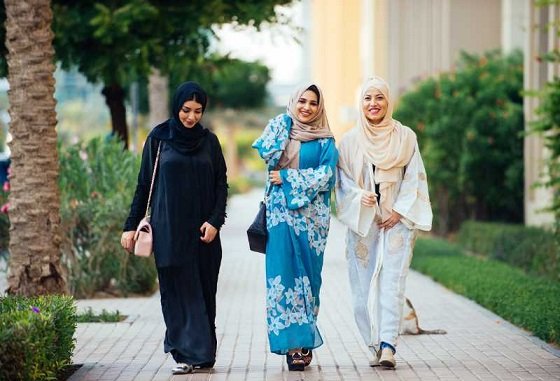The abaya, traditionally a symbol of modesty and discretion for many women in the Islamic world, has undergone a transformative journey, evolving from a simple, functional garment into a vibrant canvas for self-expression and high fashion. This evolution mirrors broader societal shifts, reflecting changes in cultural norms, professional life, and the pursuit of personal freedoms. Today, the abaya is not merely a garment but a statement, integrating seamlessly into the lifestyle choices of its wearers and offering a unique blend of tradition with modernity.
The Historical Roots of the Abaya
Originating in the deserts of the Middle East as a practical garment to protect against the harsh sun and sand, the traditional abaya was typically black, loose-fitting, and devoid of any embellishments. It served the dual purpose of adhering to Islamic principles of modesty while providing comfort in the region’s climate. For centuries, the abaya remained largely unchanged, a reflection of enduring traditions in a rapidly changing world.
The Catalysts for Change
The abaya’s turning point began with fashion globalization and the advent of social media. As the world became more interconnected, exposure to diverse fashion influences and the rise of personal expression led to a reimagining of the abaya. Young designers from within the Middle Eastern region and beyond saw the potential to blend traditional modesty with contemporary styles, fabrics, and patterns. This shift was not merely aesthetic but also reflective of a deeper change in societal attitudes toward women’s roles and identities.
The New Era of Abayas
Today’s abayas come in various styles, colors, and materials, challenging the notion that modesty and fashion are mutually exclusive. From casual, everyday wear to luxurious, designer pieces adorned with crystals and embroidery, the modern abaya dresses caters to every occasion and preference. This versatility has made the abaya a beloved garment not only in the Middle East but around the world, embraced by both Muslim and non-Muslim women as a statement of style, confidence, and cultural appreciation.
Impact on Lifestyle and Social Norms
The evolution of the abaya has had significant implications for lifestyle and social norms among its wearers. Women are now able to navigate public and professional spaces with greater confidence, expressing their identity while adhering to cultural or religious norms. The modern abaya aligns with the dynamic lifestyles of women today, accommodating their roles as professionals, creatives, and influencers.
Nadia, a marketing professional in Dubai, shares her perspective: “The abaya today is not just about modesty. It’s about making a statement, being comfortable in your skin, and expressing individuality. I can go from a business meeting to a dinner date in the same abaya, just by changing the accessories.”
The Role of Designers and Influencers
Designers have played a crucial role in the abaya’s evolution, with figures like Hana Tajima and Dolce & Gabbana introducing abayas to mainstream fashion. Their collections have shown that modest fashion can be vibrant, stylish, and highly sought after, challenging stereotypes and creating a new market niche.
Social media influencers have also contributed to the abaya’s rising popularity, showcasing the garment’s versatility and fashion potential. Through platforms like Instagram and YouTube, they inspire their followers to experiment with abayas in non-traditional ways, incorporating them into a diverse range of personal styles.
The Global Appeal of the Abaya
The modern abaya has transcended cultural and religious boundaries, appealing to a global audience interested in modest fashion. Its rise reflects a broader trend towards inclusivity and diversity in the fashion industry, acknowledging the demand for garments that cater to different lifestyles, beliefs, and aesthetic preferences. The abaya’s global appeal is a testament to its versatility, proving that traditional garments can adapt and thrive in a modern context.
Challenges and Controversies
Despite its evolution, the abaya has faced criticism from various quarters. Some view the changes as a departure from the garment’s modest origins, while others argue that the high-fashion versions are inaccessible to the average wearer due to their high price points. These debates highlight the ongoing tension between tradition and modernity, a reminder that fashion is often at the forefront of cultural and ideological shifts.
The Future of the Abaya
As we look to the future, the abaya seems set to continue its trajectory from a traditional garment to a global fashion statement. With each passing year, new designs and interpretations emerge, pushing the boundaries of what the abaya can represent. Technology, sustainability, and ethical fashion are likely to play a significant role in its evolution, responding to the growing demand for garments that are not only beautiful but also kind to the planet and its people.
The journey of the abaya from a traditional, uniform garment to a symbol of trendsetting fashion and lifestyle choice is a powerful narrative of adaptation and resilience. It reflects the desires of its wearers to respect their cultural and religious backgrounds while engaging with the global fashion community. As the abaya continues to evolve, it will undoubtedly remain a subject of interest and inspiration, a garment that encapsulates the complex interplay of tradition, identity, and style in the modern world.
Conclusion
In conclusion, the evolution of the abaya is a mirror to the changing landscapes of society, culture, and fashion. It exemplifies how garments can transcend their original purpose to become symbols of identity, empowerment, and global connectivity. For the women who wear them, abayas are not just about covering up; they’re about standing out, making a statement, and embracing the full spectrum of their lives and beliefs. As this evolution unfolds, the abaya will continue to challenge, inspire, and redefine the essence of modest fashion in the years to come.
